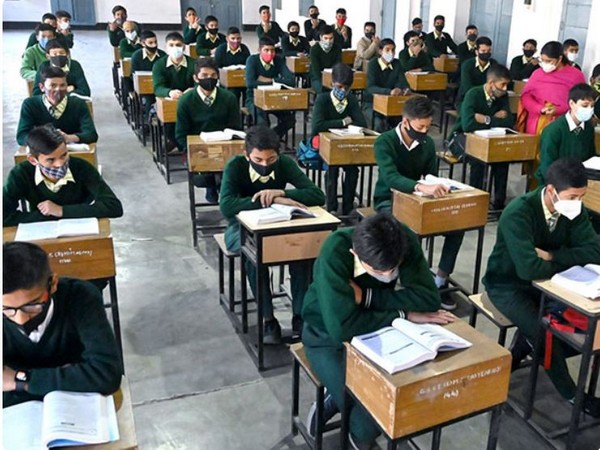The post-Covid Annual Status of Education Report (ASER) 2022, released recently by Pratham, is not encouraging. Although students’ enrolment increased to more than pre-pandemic levels, the learning gap widened for fundamental skills in the 3 Rs (reading, writing and arithmetic). In spite of the enthusiasm in students towards schools, their basic levels have taken a big hit with their reading and writing abilities as compared to numeracy skills worsening sharply and dropping to pre-2012 levels.
Whereas a decline was seen in the basic 3 Rs of children in Classes III and IV, the performance in basic arithmetic of those in Class VIII showed an increase over the pre-pandemic period. Also, this increase is driven by improved outcomes among girls, particularly those enrolled in the government schools where the blended learning in traditional and virtual modes was more effective. The availability of smartphones of enrolled students nearly doubled from 2018 to 2021. There seems to be a divided view of a “new normal” in education, with some institutions transitioning back to their old system of a chalk-and-talk teaching-learning process and others practicing blended learning. At a time when long-standing challenges in proficiency, well-being and equity were only exacerbated by the pandemic, the idea of blended learning emerged to rescue the education sector from being jeopardised. Technology did not disappoint, as the guardians of education began adopting and leveraging the concept in novel ways. However, one of the biggest questions educators looked to answer was how to implement a remote learning programme to ensure quality education. Hopefully, they did not simply address what curriculum and which digital learning solutions would be used but were so centered around equity. They did consider potentially problematic factors such as budget, affordability, IT challenges and more.
Advertisement
However, solutions to these issues did not come with easy answers. They realised they needed to get on board with new technology so that their smart idea of blended and remote learning could do wonders. As the pandemic began to recede, teachers shifted their focus to the back-to- -school mode and how new technology would play a role in the everyday classroom. All this created a sense of cautious optimism among educators as they began to ponder over the future of education. As institutions began to reopen, they believed that at least some areas of education would revert to pre-pandemic practices. That said, some of the practices adopted during virtual and blended learning would be there to stay. Admittedly, while crisis mitigation seems to be prudent, digital technology has the potential to systematically reshape the teaching-learning process but only if our educators can understand how they can fit this into effective pedagogy. In spite of the efforts made by our educators, students, in general, did not take full advantage of the technological tools in learning during the previous few years. In fact, the tools were not used effectively by the teachers as well who had not been properly trained to integrate them.
In the new normal, teachers should have transformed how they teach online, especially since online tools and resources present lots of affordances that both teachers and students could take advantage of. They were required to design effective synchronous and asynchronous learning activities that would enable sustained engagement and selfregulation.
Blended learning came to be known as the new normal in the education sector. This might be described as an instructional approach that integrates traditional classroom methods of face-to-face interaction and online digital methods. In some of the developed countries, blended learning has already become an established educational model to cope with the impact of the pandemic and the aftermath. Blended learning requires an amount of traditional classroom modality. Considering the social distance group work approach, peer instruction might be modified or reduced. Through machine learning or artificial intelligence (AI), adaptive programmes have been developed that care for the individual needs of students. AI tutors could be used in teaching subjects like mathematics and could be applied in all levels of technology. AI could be used in schools to enhance personalised learning among students, especially those with special needs.
Virtual Reality technology is already the catchword in the technology world, with which students can learn via interacting with a 3D world. In introducing experimental learning in schools through VR, google has been a byword. Educational resources can be accessed from any part of the world, thanks to cloud computing technology. Virtual resources such as written lessons, audio lessons, video assignments etc. can be stored on an institution’s cloud terminal. Students can access the resources from the comfort of their homes as also classrooms and complete their assignments. Textbook contents can be expressed through 3D models. In higher education, 3D printing is used by system designers to develop prototypes to be used in the development of final systems. The implementation of technical innovations in the education sector has been accentuated by the widespread access to the Internet. Self- learning modules (SLM) with the alternative learning delivery modalities to be offered for various types of learners may also be provided.
It is interesting to see that during the pandemic, parents became teachers and started understanding the online learning activities that educational institutions created for their wards ~ a new setup indeed, for which parents were not at all ready. In the new normal there could be a stronger home and school partnership. For that, schools can create opportunities that teach parents how to navigate the online learning environment and guide their wards at home. Sustainable external partnership with local government units and non-government organisations that can help in enabling a responsive educational continuity programme may be explored.
Indeed, the pandemic has taught skills of flexibility, adaptability and empathy to face any eventuality. These are invaluable skills. Giving our students more opportunities to practice and develop these skills is one way of preparing them for life beyond the classroom. Teaching them to empathise with others can make the post Covid-19 situation more bearable. The right to high quality education may always be upheld by providing multiple pathways to learning.
The assessments used and the extent of parental involvement allowed to ensure students learn will depend on the sincerity of efforts to adjust to the new normal.
Assessment and grading should be reviewed so that they continue to be relevant to students. Giving students continuous feedback can help them reflect on their strengths and find ways to improve. Different instructional evaluation practices have been adopted as a response to Covid-19 which may continue to be a part of the new normal education. Many schools issued guidelines changing many aspects of evaluation components of the curriculum.
In the synchronous form, teachers and students were required to work together at an arranged time through an online application like zoom. It can also be achieved through the phone. In the asynchronous form, the teachers and learners do not need to interact online in a live manner.
Many schools have decided to change their assessment scales from quantitative to qualitative. The pandemic continuously reshaped instructional evaluation; so online assessment and grading systems are inevitable.
With the new sessions in progress, online teaching and learning could be made more regular. We should see more classes being conducted through web video conferencing. Institutions might use a learning management system, such as Google Classroom, Moodle, Blackbeard Learn and Canvas to enable students to complete assignments, deliver presentations, take assessments, and receive feedback from teachers.
A rise in Open Education Resources (OER) as an inexpensive alternative to traditional textbooks might be more useful. A wide range of content and tools to help implement OER Commons, Lumen Learning, Merlot II, Open Slax CNX might be offered by many sites. Blended learning approaches might be commonly used; many Institutions might start combining blended learning with a flipped classroom approach. In a flipped classroom, the typical classroom lecture and homework elements are reversed.
Considering that the education system is to continue operating in remote or blended environments, a reliance on EdTech should remain intact. By designing a vast array of online courses that are especially tailored to the needs of the workforce today, EdTech platforms are further improving access to premium education.
Ensuring that the tools, which have been made simple to operate and to which students have equitable access, will be critical to support the education ecosystem effectively
(The writer, a former Associate Professor, Department of English, Gurudas College, Kolkata, is presently with Rabindra Bharati University)











